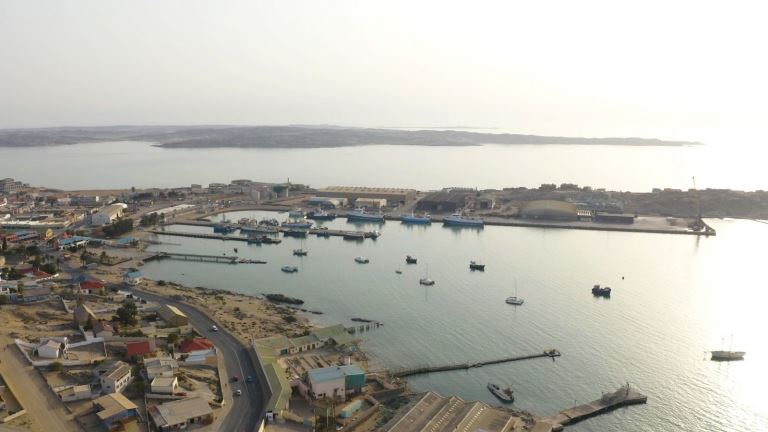New South African port planned
News12-Aug-22
South African transport utility Transnet has issued a request for qualification (RFQ) for parties interested in designing, building and operating a new deep water port in the Northern Cape, near to the Namibian border.

The new port would be closer to the Port of Lüderitz in Namibia (pictured here) than South Africa’s Port of Saldanha Bay (photo: Namibian Ports Authority)
It would be located closer to the Namibian port of Lüderitz than to the nearest other South African port, at Saldanha Bay. The successful bidder will also be required to build and operate a new railway to connect the port to the national rail system and to industrial port users.
Magenthran Ruthenavelu, programme director at Transnet National Ports Authority (TNPA), said: “The information sought through the RFQ is necessary for TNPA to chart a way forward in line with our strategic objective to operationalise a port in the region by 2026.”
Responses to the RFQ must be submitted by 2 November 2022 and given the 2026 target, it can be assumed that Transnet wants to see the chosen developer in place as soon as possible. It is noteworthy that the project is to be undertaken by a private sector party given that the last new port in South Africa, Ngqura at the heart of Coega Industrial Zone in the Eastern Cape, was completed by Transnet itself in 2009.
It also dovetails with Pretoria’s current policy of generally favouring greater private sector port and rail operation, not least because Transnet cannot afford to undertake huge capital investment projects on its own in the near future.
Transnet has indicated that the port could be used to export manganese from mines in the Northern Cape. This may be surprising given that the parastatal is about to open its new manganese export terminal at Ngqura in the Eastern Cape but rising production and global demand suggests that the Ngqura facility may not have sufficient capacity to handle all planned output.
It is also intended that the port will become a hub for green hydrogen development in the area, presumably using offshore wind and possibly onshore solar power to supply hydrogen production at a catalyser located next to the port.


